- Home
- Alison Weir
The Wars of the Roses Page 10
The Wars of the Roses Read online
Page 10
Henry V ignored this, for the greatest prize of all was almost within his grasp. On 21 May 1420 a peace treaty was ratified at Troyes by the kings of England and France, by the terms of which Henry V and his heirs were designated the lawful successors to Charles VI. Normandy was formally ceded to Henry and he was appointed Regent of France until such time as he should succeed to his new inheritance. The Treaty of Troyes effectively disinherited the House of Valois and the Dauphin Charles, and marked the pinnacle of Henry V’s achievement in France. However, it made little difference to the war, and hostilities continued as before, while the Dauphin, a penniless exile, set up a rival court at Bourges.
The Treaty of Troyes was sealed by the marriage of Henry V to Katherine of Valois, youngest daughter of Charles VI; their ‘magnificent espousals’ took place on 2 June at Troyes Cathedral. The marriage was supposed to lend dynastic credence to Henry’s new status as heir to the French throne, and as he made his vows he appeared, according to one chronicler, ‘as if he were at that moment king of all the world’.
The marriage had been under discussion since 1414, and according to Martin’s Chronicle Katherine had ‘passionately longed’ for it; from the moment she set eyes on Henry, she ‘constantly solicited her mother till the marriage took place’. She was undoubtedly handsome, if not beautiful, but Henry would probably not have cared if she were otherwise; to him, she represented France. He was never a doting husband, and Katherine seems to have been somewhat in awe of him. Theirs was essentially a dynastic match, and it is unlikely that love played much part in it.
Katherine had been born in 1401 in Paris of a demented father and a nymphomaniac mother, Isabeau of Bavaria. She had had a terrible childhood: she and her sister Michelle were neglected by their parents and nobody cared much about their welfare. They were filthy, often starving, and frequently abandoned by their unpaid attendants. The two princesses scavenged around for food or had to rely on the charity of their remaining servants.
Their father, a terrifying and sometimes violent figure, rarely saw them, but once, when he had one of his periods of lucidity, he demanded to know why his daughters were so unkempt and dirty. Their governess told him the truth, and he gave her a gold cup to sell so that necessities could be provided for the girls. Occasionally Queen Isabeau visited them, but she was too preoccupied with her many lovers and her political intrigues to spare much time for her vast brood of children, not all of whom were the King’s. Eventually Katherine was packed off to be educated at the convent at Poissy, where she learned at least one language if little else. She seems not to have been a particularly bright girl, nor was she gifted with a vivacious personality, but she emerged from the convent with looks, her rank and her precocious sensuality to commend her, as well as the most engaging manners. The Burgundian chronicler, Jean de Waurin, called her ‘a very handsome lady, of graceful figure and pleasing countenance’, and her funeral effigy at Westminster Abbey shows her to have had a long neck, good bone structure, and the long Valois nose.
Henry and Katherine returned to England in December 1420, being carried ashore in triumph on the shoulders of the barons of the Cinque Ports. Katherine was crowned with due magnificence in February 1421, and in the summer of that year, the King left her pregnant when he returned to France for what was to be his last campaign. Before he went he is said to have forbidden her to go to Windsor for her confinement because of an old prophecy which foretold that ‘Henry of Windsor shall long reign and lose all’.
Katherine disobeyed him. She went to Windsor in the autumn and there, at four o’clock in the afternoon of St Nicholas’s Day, 6 December, after a painful labour, she bore a son, who was styled Duke of Cornwall from his birth. Henry V was besieging Meaux when he heard he had a male heir, and sent word that his son must be christened Henry and that his wife must without delay hear a mass of the Trinity and offer the child to God. Archbishop Chichele officiated at the baptism, while the King’s next brother, John, Duke of Bedford, Bishop Beaufort, and Jacqueline, Duchess of Hainault stood sponsors. There was great public rejoicing. The little prince throve, and in January 1422 one Joan Astley was appointed his nurse.
Henry V never saw his son, and when the Prince was six months old Katherine left him behind in England in the care of his uncle, Humphrey, Duke of Gloucester, Henry V’s youngest brother, and went to join her husband.
Henry V did not live to become King of France. The stresses of war and endless campaigning had prematurely aged him. In later life he grew a beard and let his curly hair grow long. A stone effigy of him in York Minster, executed around 1425 and recently identified as a true likeness, portrays him thus, as does the obverse of his great seal. He looks careworn and tired, and, indeed, he was intermittently ill from 1419 onwards.
In June 1422 Henry was at Senlis with the King and Queen of France when the Duke of Burgundy requested his aid in relieving a garrison on the Loire from attack by the Dauphin’s men. Although he was unwell, having contracted a ‘lengthy illness as a result of long and excessive labours’ during the siege of Meaux, which had ended in May, Henry set off on yet another expedition, having said what was to prove a final farewell to his wife. He tried resolutely to ignore his illness, which took the form of high fever with violent dysentery, but at length he became so incapacitated that he could not sit astride a horse and had to be carried in a litter. Even this caused him terrible agony, and he had to be taken by boat along the Seine to the castle of Bois-de-Vincennes, near Paris, having resigned his command to his brother Bedford.
On arrival at Vincennes, he insisted on riding on horseback to the castle, but could endure no more than a few steps. His attendants lifted him, half fainting, into a litter, where he lay wild with pain. The illness had so consumed his strength that the doctors dared not give him any medicines, and it was clear that he was dying.
On 31 August the King demanded to know the truth about his condition. His physicians told him he had at best two hours to live. Bedford had come to say farewell, as had his other captains, Thomas Beaufort, Duke of Exeter, and Richard de Beauchamp, Earl of Warwick. Queen Katherine was still at Senlis with her parents. As the evening of 31 August wore on, the dying King’s sufferings increased. His intestines, genitalia and lungs were already in a state of putrefaction. Shortly before two o’clock in the morning of 1 September 1422, Henry whispered that his constant desire had been to recapture Jerusalem from the Turks. Then, clutching a crucifix, he murmured, ‘In manuas tuas, Domine, ipsum terminum redemisti,’ and died.
His death, says Walsingham, ‘was deservedly mourned’ for ‘it left no one like him among Christian kings or princes. Thinking of his memorable deeds, people felt awe at his sudden and terrible removal,’ which in years to come proved to have been a greater tragedy than anyone then living could have foreseen.
When Henry died his body was so skeletal that there was little flesh left to decompose, and his corpse was prepared for burial in the usual way, with even the intestines left inside. So that it should not stink during the journey back to England, it was embalmed with aromatic herbs, wrapped in waxed linen, lead and silken cloth, and placed in a coffin. This was laid on a black-draped bier surmounted by an effigy wearing royal robes and a crown, and escorted by a mighty host of mourners in doleful procession through France, across the sea, and home to its final resting place. The Queen was chief mourner, and it was she who commissioned the fine tomb of Purbeck marble which was raised to Henry’s memory in a new chantry next to the shrine of St Edward the Confessor in Westminster Abbey. On this was placed an effigy of wood, painted in silver and gilt, with a solid silver head. During the Reformation of the 1530s, Henry VIII’s commissioners stripped the tomb of its silver, leaving only a headless effigy. This remained for over four hundred years until a new head, based on contemporary portraits, was added in the 1970s.
As a king, Henry V had been extremely successful: he had kept the peace at home by governing with firmness, justice and mercy, and had united his people behind him in a
common endeavour. His victories had added lustre to the name of Lancaster, and he had restored the prestige and authority of the Crown. In fact, his achievements were regarded by his contemporaries as little short of miraculous, and his early biographers wrote extravagantly flattering accounts of him, thus giving rise to the legend of a hero-king that found its greatest expression in Shakespeare’s play and has influenced writers of English history to this day. Only now, in the twentieth century, are some of the less palatable truths about Henry V acknowledged.
His death was an unmitigated disaster for England. So much of France remained to be conquered and, even with a leader such as Henry, the enterprise would have been a forbidding task: ruled by an infant king, however diligent his regents, England could not hope to win the war, for her resources could not support it. Henry V had won much, but at enormous cost, and even in his lifetime there had been complaints. Parliament had become less ready to vote funds and had refused to grant further taxation; he had had to rely on loans to finance his campaigns in later years. This brought the Crown near to bankruptcy and burdened it with crippling debts. Henry had been unable to pay even his servants’ wages; how, then, was the completion of an English conquest of France to be financed?
Henry V’s reopening of the Hundred Years War had been intended to launch England into a new era of prosperity and glory. Instead he had saddled her with decades of expense and humiliation, which would ultimately bring about the ruin of his house. Even the dual monarchy established by the Treaty of Troyes was a precarious institution that Henry might not have been able to maintain, had he lived. The French people resented it, and large parts of France were as yet unconquered. In fact, the activities of Henry V in France did more than anything else to foster the growing sense of nationalism in that kingdom.
After his death, it was inevitable that divided opinion about the continuance or otherwise of the war with France would ensure that the English magnates would group themselves into factions: those in favour of following the late king’s example and prosecuting the war, and those who believed that a peaceful end to it was essential. These differences would institute half a century and more of government by factions, which in itself would undermine law and order and the stability of the realm and even of the Crown itself. Worse still, the throne had now passed from a strong and respected man to a helpless baby, consigning England to the uncertainties of minority government. Not for nothing was it commonly said, ‘Woe to thee, O land, when thy king is a child.’
5
The Child King
Henry VI succeeded his father at the tender age of nine months on 1 September 1422. On 11 October his grandfather, Charles VI, ended his miserable existence on earth, and Henry was proclaimed King of France also, in accordance with the terms of the Treaty of Troyes. In France, however, most people refused to acknowledge him, holding that the Dauphin should succeed his father. For the moment, though, the English held the upper hand, for Burgundy was all-powerful in France, and Burgundy was a staunch friend to England.
Henry V had expressed the fond wish that his son would one day go to Constantinople and ‘take the Turk by the beard’, and there were fervent hopes in every quarter that the infant king would grow up to emulate the auspicious example of his father. As the chronicler William Worcester put it, upon his life England’s weal depended.
The most pressing problem in 1422 was the establishment of a regency government. Henry V’s will, which no longer survives, instructed that Bedford should be Governor of Normandy and Regent of France, and that Humphrey, Duke of Gloucester, be Protector of England and guardian of the young King, with the support of the Earl of Warwick. However, the wishes of a deceased monarch held no force in law.
On 28 September the magnates swore allegiance to Henry VI. They then made plans for the minority government, summoning Parliament in the King’s name and establishing a regency council made up of the most influential lords and bishops in the kingdom. Gloucester was appointed Protector and Defender of the Realm and the Church in England and principal councillor until such time as the King came of age; the appointment was at the King’s pleasure, which meant in effect that the Council could revoke it at any time. The lords of the Council were reluctant to allow Gloucester sovereign power and would not permit him to bear any title ‘that should import authority of governance’. His duties were restricted to keeping the peace and summoning and dissolving Parliament, and when Bedford was in England Gloucester was to give precedence to him. Gloucester repeatedly asserted that Henry V had intended him to enjoy sovereign authority, but to no effect: the lords of the Council were adamant that he was just a figurehead acting as the King’s commissioner, whose actions were subject to their consent. For this state of affairs Gloucester blamed his uncle, Bishop Beaufort, whose influence was never to be underestimated and who had himself wished to be named regent. Gloucester had opposed this vociferously, and now the Duke was convinced that Beaufort had had his revenge. During the minority it would in effect be the lords of the Council who exercised the sovereign prerogative on the King’s behalf, and behind this there was naturally a degree of self-interest on the part of the magnates.
The Queen was not given any political role in the regency, and at Henry V’s request, Thomas Beaufort, Duke of Exeter, and Bishop Beaufort, young Henry’s great-uncles, were given responsibility for the safe-keeping and nurture of the King.
The lords confirmed Bedford’s appointment as Regent of France. His task was a thankless one, for he had to maintain Henry V’s conquests there, protect the interests of the dual monarchy, and proceed to the conquest of those parts of France not yet under English rule. To support him in this he counted on England’s ally, Philip of Burgundy, who had reasons of his own for bringing about the destruction of the House of Valois.
John of Lancaster had been born in 1389 and created Duke of Bedford in 1414. In 1423, to cement his friendship with Burgundy, he married the Duke’s sister Anne. He had had considerable experience of government, and Henry V, trusting his brother completely, had appointed him Regent of England during his French campaigns after the death of the Duke of Clarence. As Governor of Normandy, Bedford established a policy of conciliation, making it clear he would honour the ancient traditions of the duchy. He was a wise, just, enlightened and respected statesman and a brave soldier whose men recognised his integrity. Those who harassed the indigent population could expect severe and immediate punishment, for Bedford’s chief aim was to make English rule acceptable to the French, and in this he enjoyed moderate success. During his lifetime English interests in France were more than satisfactorily protected. Nevertheless, Gloucester, jealous of his elder brother, never ceased criticising him, and seemed on occasion to be doing his best to wreck the vital alliance with Burgundy. But then Gloucester, no realist, was his own worst enemy.
Born in 1390, Humphrey of Lancaster had been created Duke of Gloucester in 1414, and may have attended Balliol College, Oxford. He was one of the best educated princes in mediaeval England, a lover of classical learning, and the internationally renowned patron of humanist scholars as well as writers such as Titus Livius of Forli, Leonardo Aretino, John Lydgate and John Capgrave. His donation of 263 books to the University of Oxford provided the foundation for Duke Humphrey’s Library at the Bodleian, although the collection was dispersed in the sixteenth century.
Gloucester was intensely ambitious, and his single aim in life was self-promotion. Although in fact he enjoyed considerable power, it was never enough for him, and he was consistently jealous of the precedence accorded to Bedford and the wealth and influence of Bishop Beaufort. His arrogance, irresponsibility, volatile temper and insistence on single-mindedly furthering his own interests, whether or not these were at variance with the common weal of the country, all constituted a bar to the fulfilment of his ambitions.
Gloucester had been given a command – and been wounded – at Agincourt, and had served Henry V on later campaigns; he was a good soldier, anxious to win military glo
ry. Henry V had been his hero; he was loyal to his brother’s memory and resolved to pursue his war policy, which, to Gloucester, was a sacred trust. He was a pious man, if a promiscuous one – his sexual excesses are said to have undermined his health by the time he was thirty. He was also gracious in manner and affable to all classes, and it was this that made him popular with the common people and caused them to dub him ‘Good Duke Humphrey’. The magnates, who knew him better, might well have called him something rather different.
Bishop Beaufort, Gloucester’s chief rival, was a shrewd politician who was intellectually the Duke’s superior – Gloucester was seldom to get the better of him. The Bishop was by far the most dynamic of Gaunt’s sons by Katherine Swynford, and saw himself primarily as a European churchman. His main ambition was to become pope, but although he became a cardinal in 1426, it was a dream that would never materialise.
The chronicler Edward Hall describes Beaufort as ‘rich above measure of all men’. He had profited immensely from the wool trade and had used his wealth as a bridge to power. His loans to the Crown – which during the period 1406–46 amounted to over £213,000 – bolstered the depleted royal finances. Gloucester tried to accuse Beaufort of usury, then condemned as mortal sin by the Church, but could uncover no proof that Beaufort was actually charging interest on his loans. Examination of the Bishop’s accounts has only recently proved that he did indeed make hefty profits. Beaufort was not only out to gain wealth, but was also to use that wealth to buy the power to challenge Gloucester’s leadership of the Council and gain political supremacy himself.
Beaufort exerted enormous influence over the young King, who would come to regard him as ‘a very dear uncle to me, and most liberal’. Throughout the minority, the Beauforts were to be a united and powerful faction. Exeter was the King’s guardian; his nephew Edmund Beaufort was a member of the Council (Edmund’s elder brother Somerset was at this time a prisoner of the French), and the Cardinal ruled all.

 Richard III and the Princes in the Tower
Richard III and the Princes in the Tower Britain's Royal Families: The Complete Genealogy
Britain's Royal Families: The Complete Genealogy The Lady in the Tower: The Fall of Anne Boleyn
The Lady in the Tower: The Fall of Anne Boleyn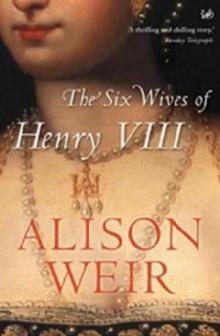 Six Wives of Henry VIII
Six Wives of Henry VIII Elizabeth of York: A Tudor Queen and Her World
Elizabeth of York: A Tudor Queen and Her World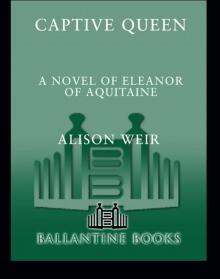 Captive Queen
Captive Queen Innocent Traitor
Innocent Traitor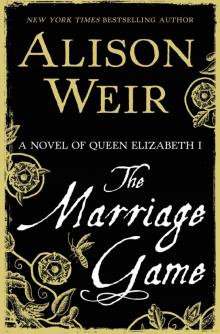 The Marriage Game
The Marriage Game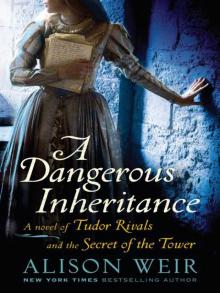 A Dangerous Inheritance
A Dangerous Inheritance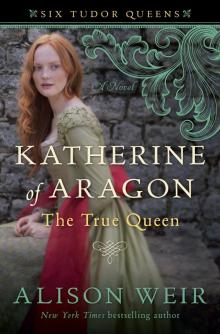 Katherine of Aragón: The True Queen
Katherine of Aragón: The True Queen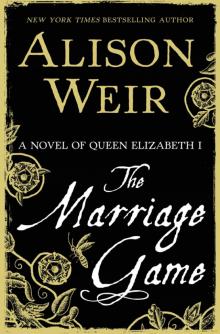 The Marriage Game: A Novel of Queen Elizabeth I
The Marriage Game: A Novel of Queen Elizabeth I Princes in the Tower
Princes in the Tower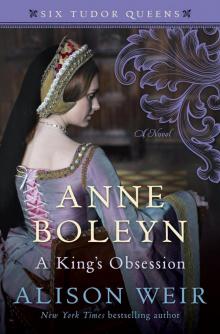 Anne Boleyn: A King's Obsession
Anne Boleyn: A King's Obsession Traitors of the Tower
Traitors of the Tower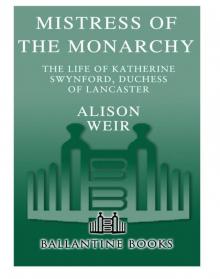 Mistress of the Monarchy: The Life of Katherine Swynford, Duchess of Lancaster
Mistress of the Monarchy: The Life of Katherine Swynford, Duchess of Lancaster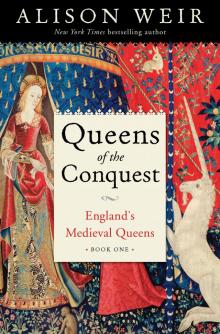 Queens of the Conquest: England’s Medieval Queens
Queens of the Conquest: England’s Medieval Queens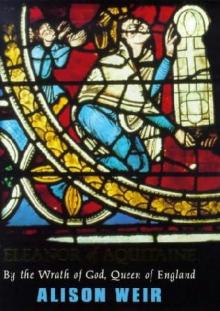 Eleanor of Aquitaine: A Life
Eleanor of Aquitaine: A Life Mary, Queen of Scots, and the Murder of Lord Darnley
Mary, Queen of Scots, and the Murder of Lord Darnley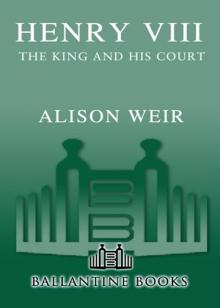 Henry VIII: The King and His Court
Henry VIII: The King and His Court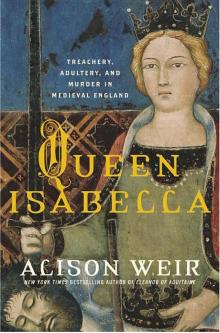 Queen Isabella: Treachery, Adultery, and Murder in Medieval England
Queen Isabella: Treachery, Adultery, and Murder in Medieval England Katheryn Howard, the Scandalous Queen
Katheryn Howard, the Scandalous Queen Arthur- Prince of the Roses
Arthur- Prince of the Roses The Wars of the Roses
The Wars of the Roses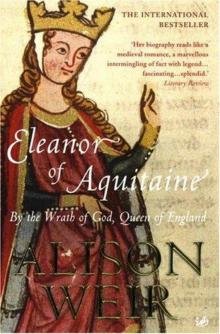 Eleanor of Aquitaine: By the Wrath of God, Queen of England
Eleanor of Aquitaine: By the Wrath of God, Queen of England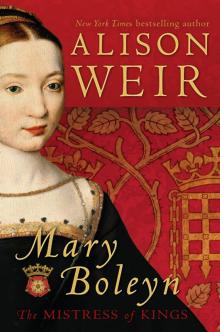 Mary Boleyn: The Great and Infamous Whore
Mary Boleyn: The Great and Infamous Whore Jane Seymour: The Haunted Queen
Jane Seymour: The Haunted Queen Anna of Kleve, the Princess in the Portrait
Anna of Kleve, the Princess in the Portrait Lancaster and York: The Wars of the Roses
Lancaster and York: The Wars of the Roses The Grandmother's Tale
The Grandmother's Tale The Princess of Scotland (Six Tudor Queens #5.5)
The Princess of Scotland (Six Tudor Queens #5.5) The Lady Elizabeth
The Lady Elizabeth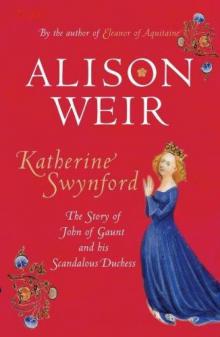 Katherine Swynford: The Story of John of Gaunt and His Scandalous Duchess
Katherine Swynford: The Story of John of Gaunt and His Scandalous Duchess The Curse of the Hungerfords
The Curse of the Hungerfords The Lost Tudor Princess: The Life of Lady Margaret Douglas
The Lost Tudor Princess: The Life of Lady Margaret Douglas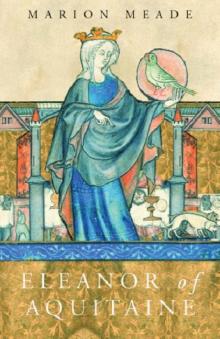 Eleanor of Aquitaine
Eleanor of Aquitaine Mistress of the Monarchy
Mistress of the Monarchy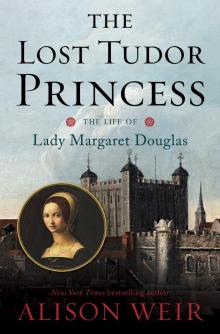 The Lost Tudor Princess
The Lost Tudor Princess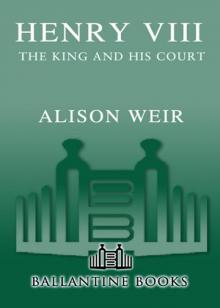 Henry VIII
Henry VIII Anne Boleyn, a King's Obsession
Anne Boleyn, a King's Obsession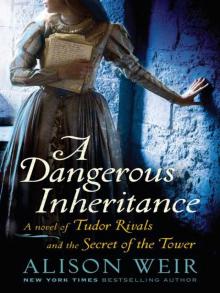 A Dangerous Inheritance: A Novel of Tudor Rivals and the Secret of the Tower
A Dangerous Inheritance: A Novel of Tudor Rivals and the Secret of the Tower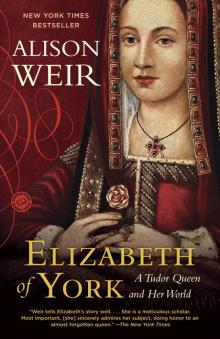 Elizabeth of York
Elizabeth of York Katherine of Aragon, the True Queen
Katherine of Aragon, the True Queen Katherine Swynford
Katherine Swynford Wars of the Roses
Wars of the Roses Queens of the Conquest
Queens of the Conquest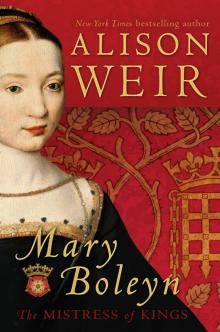 Mary Boleyn
Mary Boleyn Britain's Royal Families
Britain's Royal Families The Tower Is Full of Ghosts Today
The Tower Is Full of Ghosts Today Life of Elizabeth I
Life of Elizabeth I Anne Boleyn A King's Obssession
Anne Boleyn A King's Obssession Lancaster and York
Lancaster and York Jane Seymour, the Haunted Queen
Jane Seymour, the Haunted Queen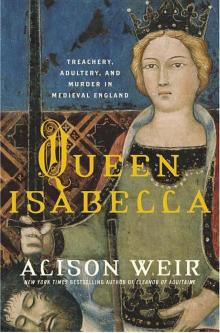 Queen Isabella
Queen Isabella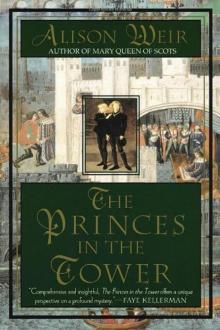 The princes in the tower
The princes in the tower